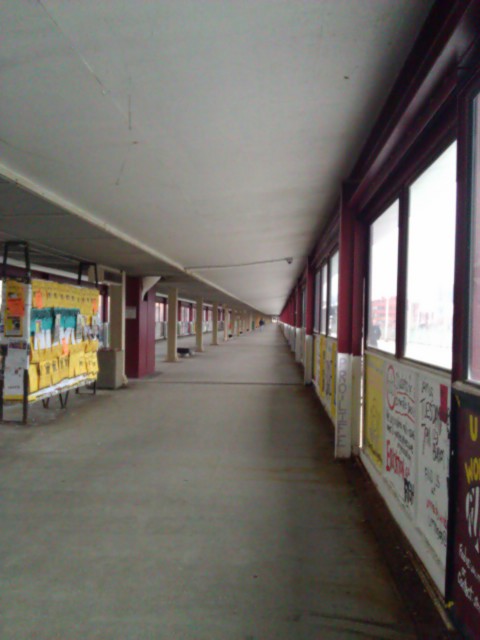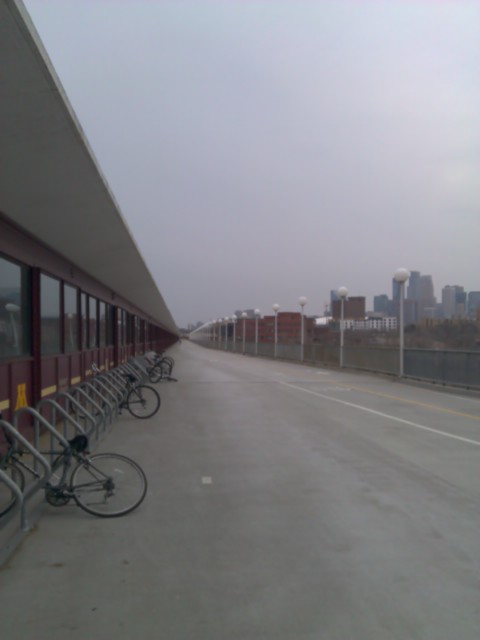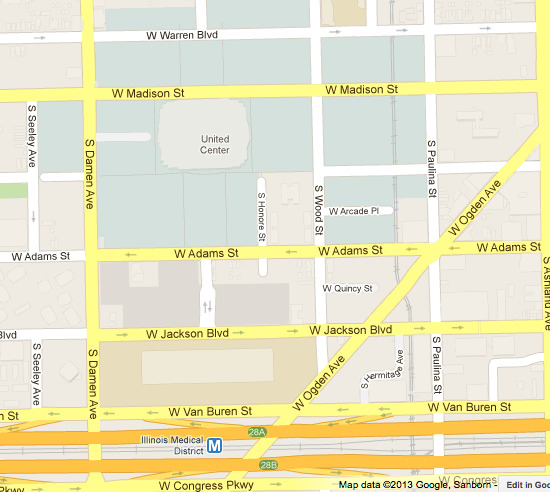As cities look to expand transit, it's common to use an existing transportation corridor on which extra ground level space is available. Many cities have built rapid transit and regional rail and bus lines in the median of a highway, and many others continue to do so because it's cheap and has only minimal impacts.
Aside from the cost, freeway corridors can be great places for long-distance express buses or trains with either no stops or just a few park-and-ride stations. However, it's not a good place for any other transit service. My experience on Chicago's Blue Line provides a clear case against locating transit stations along a highway.
Just the presence of the highway ensures that walkable neighborhoods will not develop, and any nearby businesses will be hostile to pedestrians. The location of the station means that a long, unpleasant walk is required from the train to anything else. And since the highway divides communities, the lack of street life makes it not only uncomfortable but also potentially unsafe.
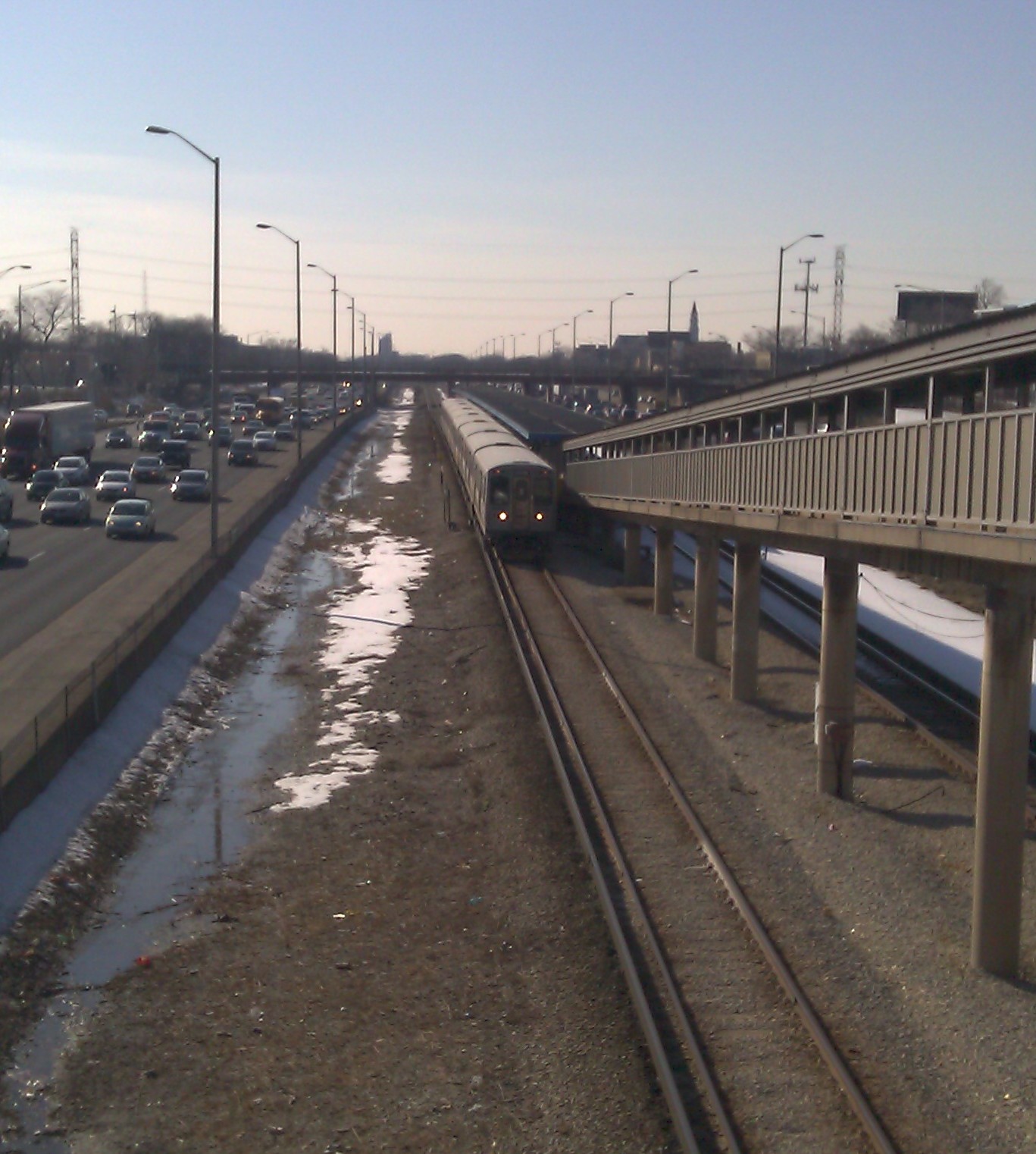
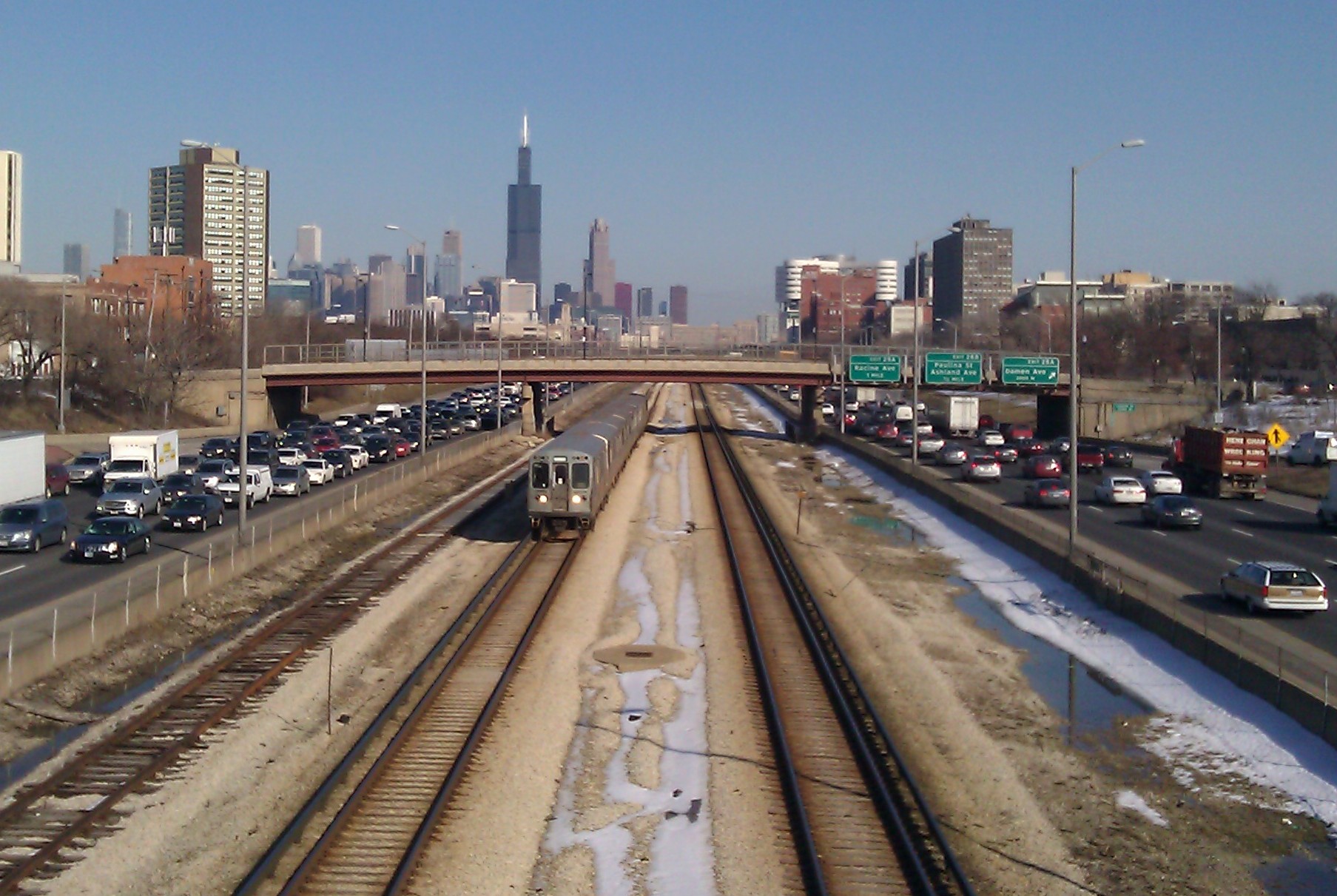
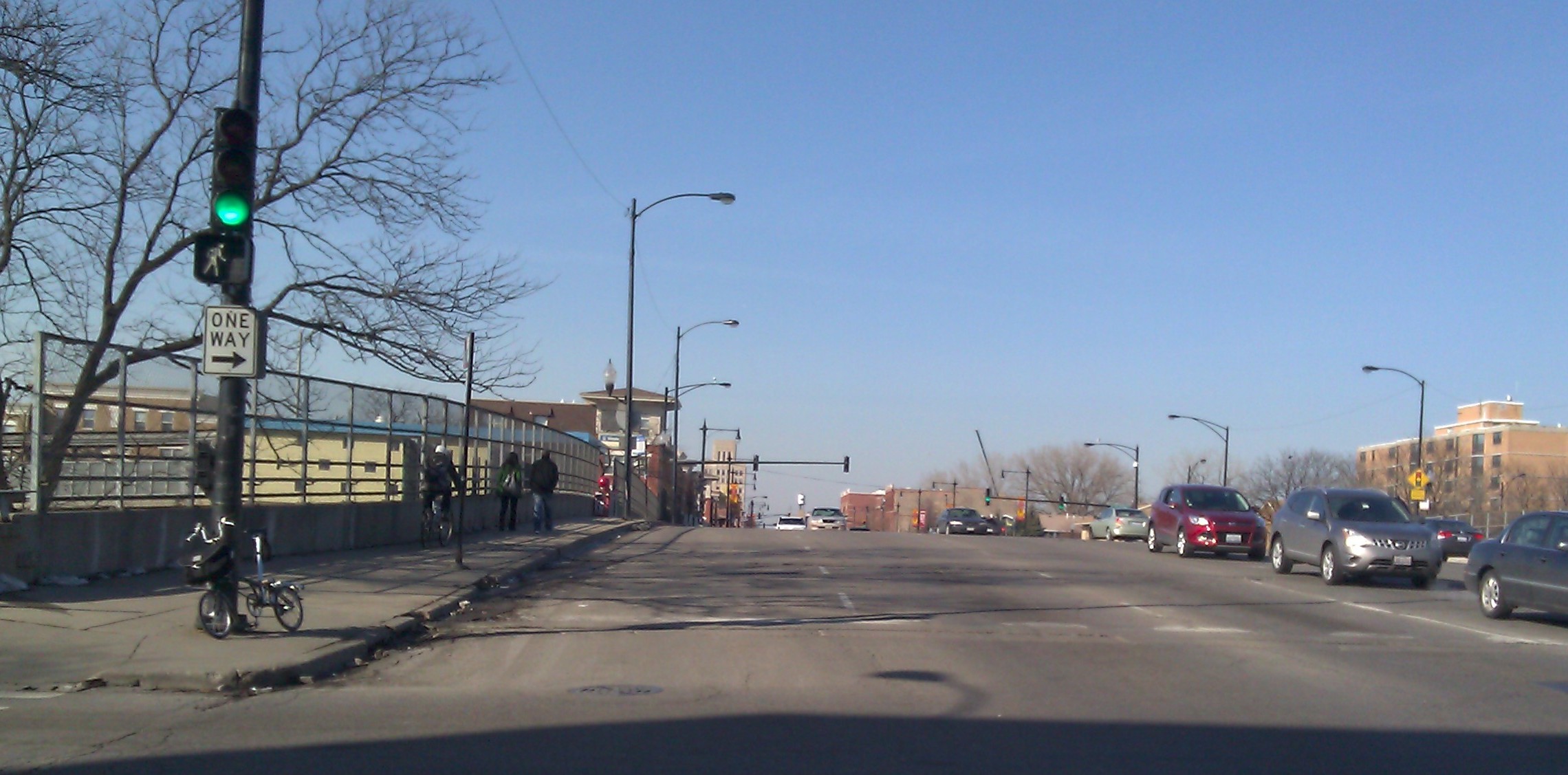
Once you reach the platform, you're still exposed to high health risks from auto emissions, not to mention the discomfort caused by noise and the nauseating feeling of traffic whizzing by within a few meters of where you're standing. Not a nice place to be waiting, and certainly not a good way to attract riders and promote public transit.

There is often a tendency to be lazy and build a transit line along a highway simple because there is room and it's relatively cheap and easy to do. Yet before we take that plunge, let's think hard about what kind of ridership you expect to be serving, as highways and rapid transit lines promote very different kinds of land use.
Rapid transit stations have the potential to attract dense, pedestrian friendly mixed-use development that people will walk to and spend time hanging around. But highways are usually more powerful in dividing communities and creating hostile walking environments. Next to most highways you typically warehouses, auto repair shops, parking lots and other things that don't create much street life.
While highway transit may be better than nothing at all, I think it's well worth the extra cost and construction impacts to locate rapid transit lines and stations either in existing dense areas in need to better transit or in places with the potential to become walkable, thriving neighborhoods.
Fortunately, CTA seems to recognize this as they have decided that the planned extension of the Red Line's southern portion (also in an expressway median) will move away from the highway.
